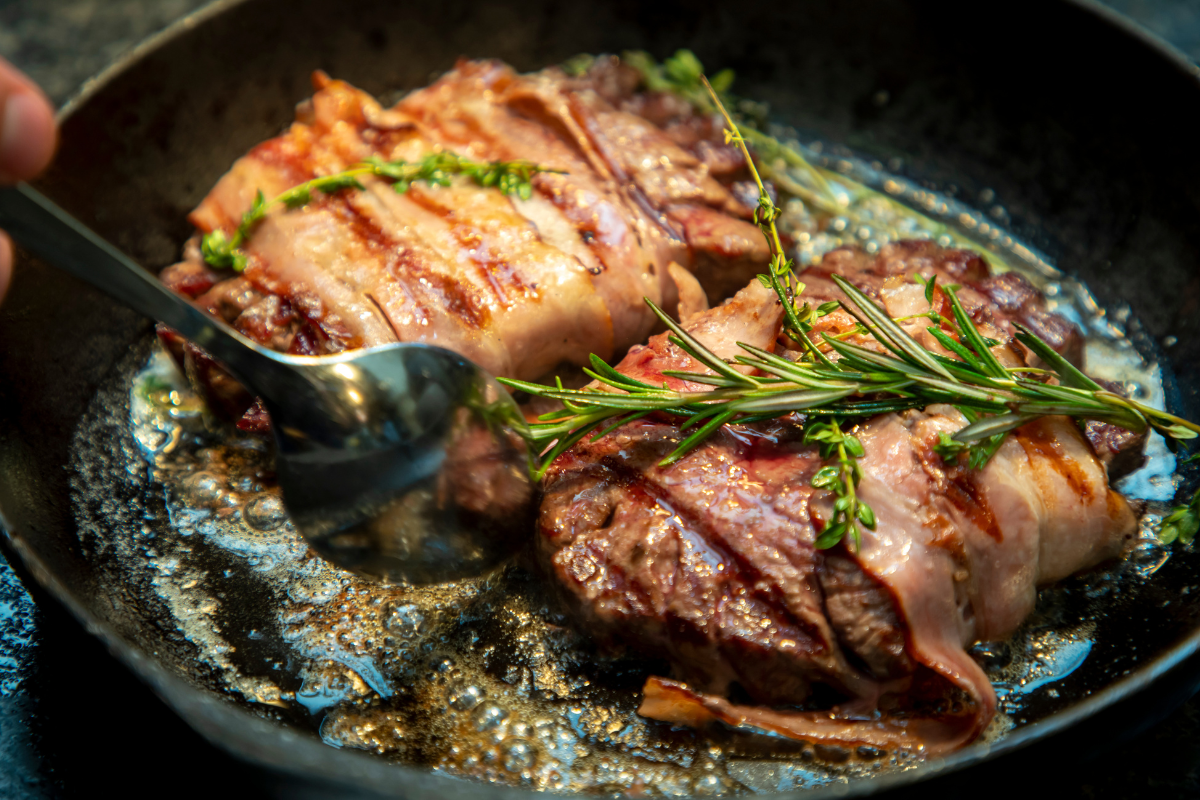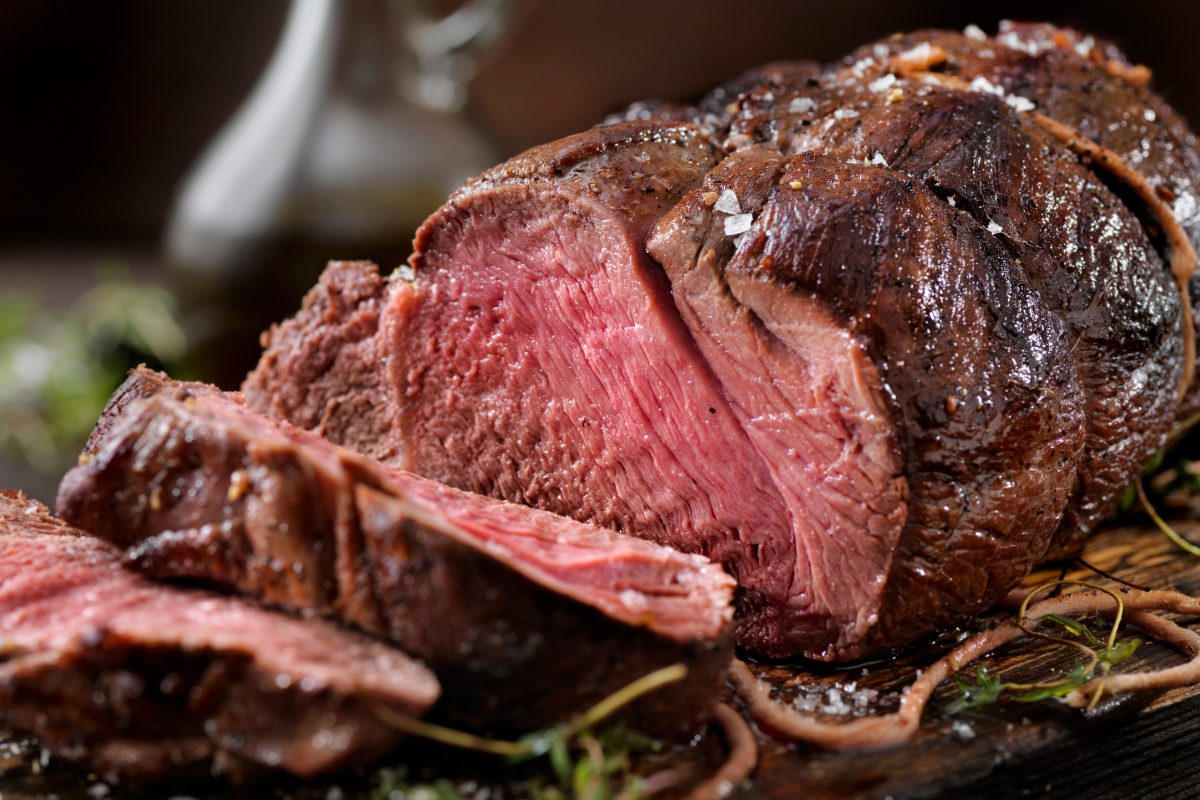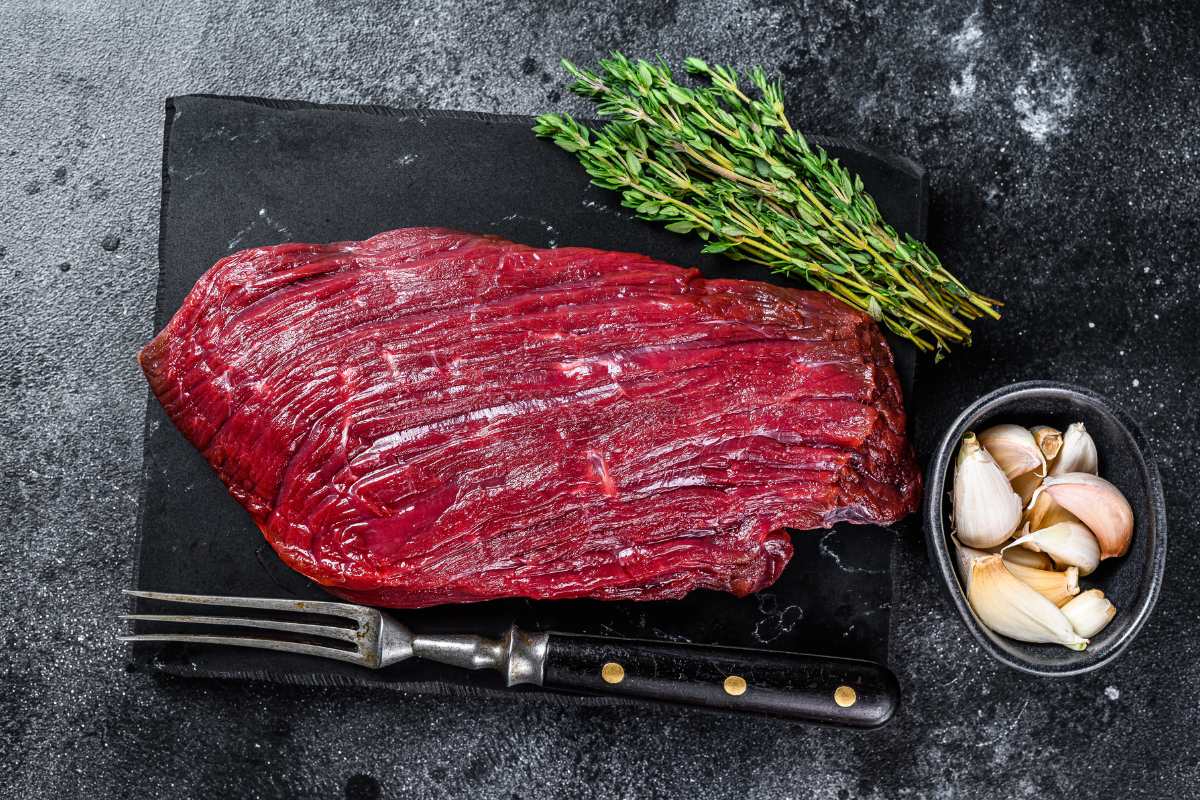Introduction to Ground Venison
Ground Venison Recipes: A Gateway to Culinary Diversity
Versatility in the Kitchen
Ground venison is revolutionizing culinary practices, offering a healthier alternative to conventional meats. Its versatility shines as it blends into various dishes, encouraging cooks at all levels to discover its rich flavors. These recipes span from robust, comforting meals to refined, sophisticated dishes, showcasing ground venison’s broad culinary appeal.
Diverse Culinary Creations
From elegant terrines to hearty chilis, ground venison recipes serve as a foundation for culinary creativity. They cater to a spectrum of tastes and dining occasions. Venison’s compatibility with diverse flavors and ingredients underscores its value in health-conscious and flavor-rich cooking.
The Culinary Appeal of Ground Venison
Ground venison elevates dishes, merging with herbs and spices for unique taste experiences. It’s a go-to for chefs aiming to enhance their menu with nutritious, flavorful options. Whether crafting a casual meal or a gourmet dish, ground venison recipes offer a path to both taste and nutritional benefits.
Ground venison recipes not only cater to those seeking healthier meal options but also to culinary enthusiasts eager to experiment with different flavors and textures. Whether it’s integrating ground venison into a rustic chili, crafting flavorful venison burgers, or using it in an elegant terrine, these recipes demonstrate how well venison pairs with a wide array of ingredients and seasonings.
By delving into ground venison recipes, cooks can discover new ways to enhance their dishes with this lean, nutritious meat. From casual family dinners to sophisticated dining experiences, ground venison recipes provide a foundation for creativity and enjoyment in cooking, appealing to a range of tastes and dietary preferences.
Historical Context
Ground venison’s culinary roots run deep, with a history intertwined with hunting traditions across the globe. From North American forests to European countryside, venison has been a staple in the diets of various cultures for centuries. Historically, it was a symbol of status and sustenance, featured in royal feasts and common meals alike.
In many cultures, venison was more than just food; it was a vital resource, providing nourishment and warmth through harsh winters and lean times. Its use in traditional dishes reflects a deep respect for the hunt and the animal, with ground venison carrying forward this heritage into modern cuisine. Today, it continues to be celebrated for its depth of flavor and nutritional value, featured in both historical recipes and contemporary culinary innovations, bridging past and present in the culinary world.
Health Benefits and Nutritional Profile
Venison’s Lean Protein and Nutrients
Ground venison shines as a nutritious choice, packed with lean protein and essential vitamins. It supports muscle growth and repair with its rich amino acid profile. Venison also supplies vital nutrients like iron for blood health and vitamin B12 for nervous system function.
Leaner Than Other Meats
Venison’s fat content is lower than many meats, making it a heart-healthy option. It’s lean yet rich in beneficial polyunsaturated and monounsaturated fats. When compared to beef or pork, venison offers fewer calories and less saturated fat.
Comparative Nutritional Benefits
Against beef, venison stands out for its lower calorie and fat content while offering similar protein levels. It’s also ahead of chicken in iron and B vitamins, supporting energy and overall health. Plus, wild venison might provide more omega-3 fatty acids, enhancing its cardiovascular benefits.
By incorporating ground venison into your diet, you enjoy a flavorful meat that aligns with health-conscious eating, offering varied and rich nutritional advantages.
Selecting and Preparing Ground Venison
Choosing Quality Meat
When it comes to ground venison, quality is key. Whether you’re purchasing it from a store or grinding it yourself, look for meat that’s fresh and has a deep, rich color. Venison should have a clean, slightly gamey smell; any off odors can indicate spoilage. If you’re grinding your own, consider the venison’s origin. Wild venison will differ in taste and fat content compared to farm-raised, and understanding these nuances can help you select the best option for your recipes.
For those buying ground venison, it’s crucial to check packaging dates and ensure the meat has been stored at the correct temperatures. When grinding your own, choose cuts that balance lean meat with a bit of fat—this can enhance both flavor and texture, as venison is naturally lean and can become dry if overcooked.
Preparation Basics
Proper preparation can make all the difference in cooking ground venison. Begin by gently thawing frozen venison in the refrigerator to maintain its texture and nutritional integrity. Before cooking, bring the meat to room temperature to ensure even cooking and prevent toughness.
When cooking ground venison, remember that it’s leaner than many other meats and can overcook quickly. Use a light touch and consider adding a small amount of oil or another fat source to aid cooking and enhance flavor, especially if you’re working with a no-fat grind. Avoid high heat and long cooking times, which can drain the meat of its moisture and tenderness.
Seasoning venison well is also crucial, as its robust flavor can handle and benefit from a variety of spices and herbs. Whether you’re making burgers, meatballs, or a simple sauté, thoughtful seasoning will bring out the best in your ground venison.
By choosing quality ground venison and adhering to these preparation and cooking tips, you can enjoy dishes that are both nutritious and full of flavor, showcasing the natural qualities of this exceptional meat.
 Versatile Recipes Using Ground Venison
Versatile Recipes Using Ground Venison
Classic and Contemporary Dishes
Ground venison offers a world of culinary possibilities, from time-honored classics to innovative modern dishes. Traditional recipes like venison meatballs or venison chili leverage the meat’s rich flavor, making them hearty favorites. For a twist on the classics, incorporate venison into dishes like lasagna or shepherd’s pie, where it adds a unique and savory depth.
Contemporary culinary creations might include venison tacos, where the meat’s robustness is complemented by fresh, zesty toppings, or venison sliders, offering a gourmet take on a casual favorite. Venison’s versatility also shines in international dishes, from Italian Bolognese to Thai larb, demonstrating its global appeal.
Cooking Techniques
To maximize the potential of ground venison, various cooking techniques can be employed. Slow cooking methods, like braising or stewing, allow venison to tenderize while absorbing flavors from herbs, spices, and liquids. This method is perfect for chilis, soups, or casseroles, where venison’s flavor melds with other ingredients over time.
Conversely, quick-cooking techniques like sautéing or grilling are ideal for dishes where venison should remain tender and juicy, such as in tacos or burgers. When using these methods, it’s crucial to monitor cooking closely, as the lean meat can become tough if overcooked. Adding a bit of fat, like olive oil or bacon grease, can help keep the venison moist and flavorful.
Regardless of the cooking method, allowing ground venison to marinate in seasonings or sauces can enhance its taste and tenderness. Experimenting with different herbs, spices, and marinades will not only tenderize the meat but also introduce a variety of flavors, making each venison dish distinct and delightful.
By exploring these recipes and cooking techniques, you can unlock the full culinary potential of ground venison, creating dishes that are both comforting and exciting, and that showcase the versatility and depth of this exceptional meat. Whether sticking to beloved classics or venturing into new culinary territories, ground venison promises a delicious and satisfying experience.
The Basics of Ground Venison
Explore the foundational aspects of ground venison, emphasizing its source, the process of grinding, and its basic culinary applications. Highlight how venison compares to more common meats like beef or pork in terms of flavor, texture, and health benefits. Discuss the importance of sourcing ethically harvested venison, whether wild or farm-raised and how this impacts the quality and taste of the meat. Offer insights into the grinding process, suggesting ideal fat-to-meat ratios for different dishes, and providing tips for those grinding their venison at home.
Cooking Techniques for Ground Venison
Delve into the best practices for cooking ground venison, ensuring dishes are flavorful and the meat remains tender. Address common challenges, such as avoiding overcooking and compensating for venison’s low-fat content. Share a variety of cooking methods, from pan-frying to baking, and how each technique can be optimized for venison. Include tips for marinating or seasoning venison to enhance its natural flavors and suggest ways to incorporate venison into everyday meals, from pasta sauces to casseroles.
Creative Venison Recipes and Pairings
Unveil a selection of innovative recipes that showcase ground venison’s versatility in the kitchen. From gourmet venison sliders to exotic international dishes, inspire readers to experiment with venison in their cooking. Discuss how to pair different flavors and ingredients with venison, considering its unique taste profile. Offer guidance on side dishes and wine pairings that complement venison’s rich flavor, turning a simple meal into a culinary experience. Encourage readers to think beyond traditional recipes and explore global cuisines with venison as a key ingredient.
Nutritional Benefits of Ground Venison
Highlight the nutritional advantages of incorporating ground venison into one’s diet, focusing on its healthful attributes. Venison is renowned for its high protein content, low-fat levels, and significant presence of essential vitamins and minerals such as iron, zinc, and B vitamins. Contrast these features with those of more conventional meats to underscore venison’s role in a balanced and health-conscious diet. Discuss how ground venison can be a beneficial component of various dietary regimens, supporting everything from weight management to muscle building. Additionally, offers insights into how cooking methods can affect the nutritional profile of venison dishes, providing suggestions for preserving its health benefits while cooking.
Storing and Preserving Ground Venison
Provide valuable information on the best practices for storing and preserving ground venison to maintain its quality and safety. Detail proper refrigeration and freezing techniques, including ideal temperatures and storage durations. Offer guidance on thawing frozen venison to prevent texture degradation and nutrient loss. Additionally, introduces readers to methods for canning and jerky-making as alternative preservation strategies that can extend the shelf life of venison while offering different culinary uses. Emphasize the importance of proper storage in preventing spoilage and ensuring that venison remains a delicious and nutritious option for various dishes.
Ethical and Sustainable Practices
Address the significance of ethical sourcing and sustainable practices about ground venison. Emphasize the importance of choosing venison sourced from environments that prioritize humane treatment and ecological balance. Discuss the role of hunters and local farmers in maintaining sustainable populations and contributing to conservation efforts. Highlight how ethically sourced venison not only supports environmental sustainability but also ensures a higher quality of meat, free from industrial farming practices. Encourage consumers to consider the origins of their venison, advocating for choices that align with responsible wildlife management and agricultural practices, thereby making culinary enjoyment of venison part of a broader commitment to environmental stewardship and ethical consumption.
FAQs on Ground Venison
Expert Answers to Common Questions
- What do you mix ground venison with?
Ground venison can be mixed with a variety of ingredients depending on the recipe. For burgers or meatballs, mixing it with breadcrumbs, eggs, and spices can enhance flavor and texture. Some cooks blend venison with fattier meats like pork or beef to add moisture, given venison’s lean nature. - How should ground venison be cooked?
Ground venison is best cooked on medium heat to avoid overcooking and drying out. Since it’s leaner than many meats, it requires careful monitoring on the stove or grill. Cooking it with a bit of added fat or oil can help maintain its juiciness and tenderness. - Should you add anything to ground venison?
Adding fat, such as pork or beef fat, to ground venison can improve its moisture content and flavor, especially for preparations like burgers or sausages. For seasoning, robust herbs and spices complement venison’s rich taste without overpowering it. - How do you cook ground venison so it doesn’t taste gamey?
To reduce the gamey taste, you can marinate the ground venison in acidic ingredients like vinegar or lemon juice before cooking. Slow cooking methods with rich broths or sauces can also mellow the gamey flavor, as can pairing the meat with strong spices or sweet glazes during cooking.
Conclusion and Additional Resources
Embracing Ground Venison
Ground venison shines as a versatile, nutritious meat, ideal for various dishes. Its ability to blend into recipes like venison chili, burgers, and meatloaf highlights its culinary flexibility. Using ground venison not only broadens your kitchen repertoire but also introduces a lean, flavorful protein option to your diet.
Discover More About Venison
For further exploration into ground venison’s culinary possibilities, numerous resources are available. Engage with detailed online guides, comprehensive cookbooks, and dedicated culinary blogs that offer an array of recipes and cooking insights. Whether you’re beginning your journey with venison or seeking to refine your existing skills, these resources are invaluable for enhancing your understanding and appreciation of this versatile meat.



 Versatile Recipes Using Ground Venison
Versatile Recipes Using Ground Venison
2 thoughts on “Mastering Ground Venison: Culinary Techniques and Recipes”